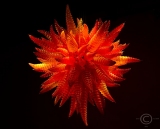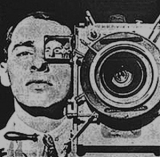- Forum
- General Discussion | Introductions | Off Topic Forum
- Photography General Discussion
- How is exposure compensation even needed?
How is exposure compensation even needed?
Post #216224
Thoughts?
Post #216232
Post #216234
It's true you can make some exposure correction in post if you shoot RAW, but it's better to get exposure right when you take the picture.
-Matt
Post #216241
Actually yes it does when it comes to exposing white itself, you use EC to compensate for it either showing too gray or blowing out. To get true whites in programmed modes you need the EC so it is partially a WB compensation.mattmoran wrote: Exposure compensation has nothing to do with white balance, and it is not an option in manual mode. It is very useful in P, Av, or Tv mode.
It's true you can make some exposure correction in post if you shoot RAW, but it's better to get exposure right when you take the picture.
-

- John Landolfi
- Super User
-
- Nikon D3S, D7100, Sony RX10, Canon G11, F4s, F2sb, RetinaflexIV etc, etc
- Followers: 1205
- Posts: 21605
-
Points:
40394
Post #216267
Post #216301
John Landolfi wrote: Exposure compensation affects the image globally, not locally. What can it usefully do in, say, Aperture Priority mode, that simply spot metering the area of interest and changing to Manual mode to shoot wouldn't equally, or better accomplish? It seems mostly useful when trying to avoid Manual mode at all costs...
I've found it useful when shooting in Av (or Tv or P) mode in snow or at the beach (where there is a lot of white sand) to use exposure compensation to tell the camera to "overexpose" by a stop or so to prevent the camera from underexposing the images. In theory I would do the opposite on a black sand beach, but the occasion doesn't arise that much
And if someone wants to explain how exposure compensation ties into white balance, I'm willing to be convinced. But for now I'm sticking with my original statement: exposure compensation has nothing to do with white balance.
-Matt
-

- Henry Peach
- Apprentice
-
- I currently use a 5DII or Sony Nex-3 most of the time.
- Followers: 50
- Posts: 2925
-
Points:
16
Post #216326
Number 7 wrote: I'm just not getting the purpose of this when you have all the adjustability you need from RAW and manual mode already?
Changing exposure in raw processing is not the same as setting it in camera.
Exposure comp is for the auto modes. It allows you to adjust what tone the meter is going for.
mattmoran wrote: But for now I'm sticking with my original statement: exposure compensation has nothing to do with white balance.
-

- KCook
- Photo Elder
-
- Canon EOS 50D and Olympus E-P5
- Followers: 1325
- Posts: 5410
-
Points:
32913
Post #216346
Kelly
-

- Scotty
- Agent 007
- James Bond, PT mod.
- Followers: 1088
- Posts: 9877
-
Points:
14961
Post #216352
Joves wrote:
Actually yes it does when it comes to exposing white itself, you use EC to compensate for it either showing too gray or blowing out. To get true whites in programmed modes you need the EC so it is partially a WB compensation.mattmoran wrote: Exposure compensation has nothing to do with white balance, and it is not an option in manual mode. It is very useful in P, Av, or Tv mode.
It's true you can make some exposure correction in post if you shoot RAW, but it's better to get exposure right when you take the picture.
This is so wrong on many levels I'm not going to touch it.
When the last candle has been blown out
and the last glass of champagne has been drunk
All that you are left with are the memories and the images-David Cooke.
-

- Stealthy Ninja
- Moderator
-
- Fuji X stuff and a 1DsIII for some reason
- Followers: 982
- Posts: 16300
-
Points:
6837
Post #216381
Scotty wrote:
Joves wrote:
Actually yes it does when it comes to exposing white itself, you use EC to compensate for it either showing too gray or blowing out. To get true whites in programmed modes you need the EC so it is partially a WB compensation.mattmoran wrote: Exposure compensation has nothing to do with white balance, and it is not an option in manual mode. It is very useful in P, Av, or Tv mode.
It's true you can make some exposure correction in post if you shoot RAW, but it's better to get exposure right when you take the picture.
This is so wrong on many levels I'm not going to touch it.
he's just confusing white balance with white levels.
-

- Henry Peach
- Apprentice
-
- I currently use a 5DII or Sony Nex-3 most of the time.
- Followers: 50
- Posts: 2925
-
Points:
16
Post #216480
-

- Frost Photography
- Photography Hooked
-
- Canon 5D Mark II
- Followers: 196
- Posts: 931
-
Points:
8761
Post #216766
mattmoran wrote: Exposure compensation has nothing to do with white balance, and it is not an option in manual mode. It is very useful in P, Av, or Tv mode.
It's true you can make some exposure correction in post if you shoot RAW, but it's better to get exposure right when you take the picture.
True, but I think the OP was questioning the purpose of exposure compensation in manual mode when all you need to do is adjust the shutter or aperture value to impact the same as exposure compensation. Technically doing this would be the same as exposure compensation feature built into camera.
"The quickest way to make money at photography is to sell your camera."
-

- KCook
- Photo Elder
-
- Canon EOS 50D and Olympus E-P5
- Followers: 1325
- Posts: 5410
-
Points:
32913
Post #216777
The difficulty with doing that in Manual mode instead of using EV compensation is that the correction will be good for only 1 scene / setup. If the light changes you have to go through the Manual mode offset drill all over again. With EV compensation in one of the PAS modes the auto metering tracks light changes and continues to apply the same EV offset.Frost Photography wrote:
mattmoran wrote: Exposure compensation has nothing to do with white balance, and it is not an option in manual mode. It is very useful in P, Av, or Tv mode.
It's true you can make some exposure correction in post if you shoot RAW, but it's better to get exposure right when you take the picture.
True, but I think the OP was questioning the purpose of exposure compensation in manual mode when all you need to do is adjust the shutter or aperture value to impact the same as exposure compensation. Technically doing this would be the same as exposure compensation feature built into camera.
Kelly
-

- John Landolfi
- Super User
-
- Nikon D3S, D7100, Sony RX10, Canon G11, F4s, F2sb, RetinaflexIV etc, etc
- Followers: 1205
- Posts: 21605
-
Points:
40394
Post #216873
KCook wrote:
The difficulty with doing that in Manual mode instead of using EV compensation is that the correction will be good for only 1 scene / setup. If the light changes you have to go through the Manual mode offset drill all over again. With EV compensation in one of the PAS modes the auto metering tracks light changes and continues to apply the same EV offset.Frost Photography wrote:
mattmoran wrote: Exposure compensation has nothing to do with white balance, and it is not an option in manual mode. It is very useful in P, Av, or Tv mode.
It's true you can make some exposure correction in post if you shoot RAW, but it's better to get exposure right when you take the picture.
True, but I think the OP was questioning the purpose of exposure compensation in manual mode when all you need to do is adjust the shutter or aperture value to impact the same as exposure compensation. Technically doing this would be the same as exposure compensation feature built into camera.
Kelly
If the light changes, why would the same EV offset be appropriate?
-

- KCook
- Photo Elder
-
- Canon EOS 50D and Olympus E-P5
- Followers: 1325
- Posts: 5410
-
Points:
32913
Post #216878
When the EV offset was needed for the subject, not the lighting. A beach example has already been given. So if a cloud comes along, putting the beach in its shadow, it's still a beach, the EV offset is still needed.John Landolfi wrote:
KCook wrote:
The difficulty with doing that in Manual mode instead of using EV compensation is that the correction will be good for only 1 scene / setup. If the light changes you have to go through the Manual mode offset drill all over again. With EV compensation in one of the PAS modes the auto metering tracks light changes and continues to apply the same EV offset.Frost Photography wrote:
mattmoran wrote: Exposure compensation has nothing to do with white balance, and it is not an option in manual mode. It is very useful in P, Av, or Tv mode.
It's true you can make some exposure correction in post if you shoot RAW, but it's better to get exposure right when you take the picture.
True, but I think the OP was questioning the purpose of exposure compensation in manual mode when all you need to do is adjust the shutter or aperture value to impact the same as exposure compensation. Technically doing this would be the same as exposure compensation feature built into camera.
Kelly
If the light changes, why would the same EV offset be appropriate?
Kelly
- Forum
- General Discussion | Introductions | Off Topic Forum
- Photography General Discussion
- How is exposure compensation even needed?
Latest Reviews
The Panasonic G9 II is a 25.2-megapixel micro four thirds camera with numerous features that make it punch out of its weight class, like 779 AF points, 5.8K video, and weather sealing.
The Fujifilm XT5 is a 40MP mirrorless camera capable of 6.2K video at 30p. With those specs, it’s an ideal choice for photographers needing a camera to pull double duty for imaging and video.
The Canon EOS R100 is an entry-level mirrorless camera introduced in 2023. But just because it’s an entry-level camera doesn’t mean it’s a bare-bones camera. Find out why in this review!
Nikon’s retro-looking Nikon Zfc is anything but retro. Under its classic body is a host of features and amenities that make it a worthwhile compact mirrorless camera for 2024.
Forum Top Posters
-
1TCav 7 posts
-
2Ruby Grace 4 posts
-
3Garbo 3 posts
-
4Street Shark 3 posts
-
5amirahusse... 2 posts
-
6CharleyL 2 posts
-
7Carter Gledhill 2 posts
-
8Sassy Girl 2 posts
-
9Chester Foster 2 posts
-
10Colorado Mike 2 posts
Latest Articles
The Panasonic G9 II is a 25.2-megapixel micro four thirds camera with numerous features that make it punch out of its weight class, like 779 AF points, 5.8K video, and weather sealing.
Cinematic photography is an interesting genre that combines photographic and videographic skills along with effective storytelling techniques. The result? Highly impactful images!
Newborn photography requires skill, the right gear, and a lot of patience. This beginner’s guide discusses critical topics that will help you be more prepared for before, during, and after the shoot.
To fill the frame means to expand the footprint of the subject in your shot. Get in close, zoom in, crop the image, or use other techniques to bring the subject to the forefront.
With these simple yet effective beginner photography tips, you can avoid some of the common mistakes beginners make and get improved results with your images.
Urban photography is a genre showcasing features in urban settings. You can photograph people, architecture, mass transit, and many other subjects. Learn how to do so in this guide!
The Nikon D850 might be an older DSLR, but it was ahead of its time when it debuted in 2017. That means it still has plenty of firepower to compete with today’s powerful mirrorless cameras.
The best beginner camera isn’t the same for everyone. That means having choice is of the utmost importance. In this guide, explore five excellent beginner camera options for 2024 and beyond.


















